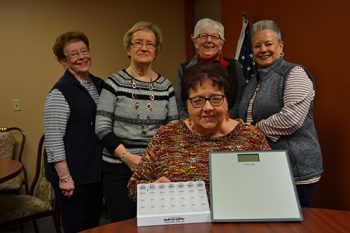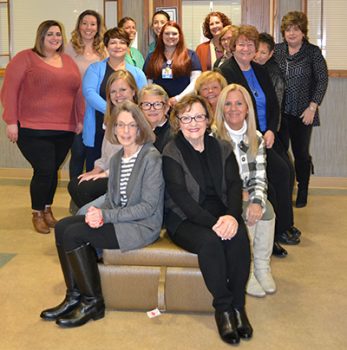When speaking about the power that volunteering brings to the Marion community, the volunteers at OhioHealth Marion General Hospital are the perfect example. Their dedicated core of volunteers over two decades has contributed more than 550,000 hours of time to the hospital. In monetary figures that equates to conservatively $9.5 million dollars, just in hours contributed. Couple that with the actual dollars raised and donated back to the hospital of more than $5 million — that is incredible.
Some of what the volunteers have supported with monetary contributions over the years include upgrades to the cafeterias and the chapels as well as several waiting areas; purchased equipment such as the first Martii machine used to translate languages for the patients; the first upgrade for the colposcope for the forensic nurse team; an infant alarm system installed on the third floor along with Giraffe warmers, breast pumps for every patient room in the OB unit, and blanket & bottle warming units; a CryoConsole for the Cardiac Cath lab which houses the components and software needed to perform cryoablation procedures; and the Endobronchial Ultrasound used to diagnose lung cancer, infections and other diseases for pulmonary patients and the list goes on.
Marion General Hospital also has several people in the community who support the Marion General Foundation’s 26 funds that provide scholarships,

payment for equipment and services and building upgrades as well as community support. The Marion General Foundation contributed more than $1.2 million dollars to the establishment and growth of the Center Street Community Clinic. It started in the 1990s and has grown into an established care center that in 2018 provided 25,000 primary care encounters to more than 7,000 unduplicated patients. This past fall, the Dining with Diabetes program was introduced with more than 30 community members participating — funded through the Marion General Foundation in cooperation with the OSU extension office. Cancer patients are supported through the generosity of The Spirit of Hope fund established by Phyllis Butterworth and her late husband Sheriff John Butterworth. Nurses have received special training in how to support families who have experienced an infant loss through the generous support of the Monica Douglas fund established by Deb Douglas after her family experienced the loss of their infant daughter Monica.
The name used by Marion General and many other hospitals for their volunteer groups is TWIG which stands for “Together We Inspire Giving.” Marion General has both the TWIG volunteers and the Foundation supporters assisting with different efforts.
The first Marion General Hospital TWIG was formed in 1954. Today, TWIG I sponsors the TWIG I OhioHealthy Kids Club. There are now six additional TWIG groups, each with their own purpose for MARION GENERAL. TWIG II supports the work of the OB and Pediatric units through fundraising projects like Friends and Family Days at Scioto Shoe Mart and the biennial Auction of the Greens. TWIG III operates the gift shop inside the hospital and supports the work of Oncology, as well as other needs within the hospital.
The TWIG IV, Marion Board of Realtors has been conducting an annual golf outing and auction, as well as Cupcake Wars and the Remembrance Tree

project each year and supports the work of Marion General Hospice, Home Care and Palliative Care. TWIG V supports the work of the Forensic Nurse team in the emergency department as well as the Employee Emergency Assistance Fund.
TWIG VI is the Garden Club of Marion. These volunteers maintain the rose beds that surround the hospital as well as the Hospice Survivors Garden by McKinley Park and a garden at the Tall Grass Trail. And TWIG VII operates the gift shop on the outpatient Marion Medical Campus and supports the work of rehab services and general hospital needs.
Like all organizations that depend on the efforts of volunteers, like these devoted TWIG groups and Foundation supporters, Marion General Hospital is very grateful for their dedication and never-ending efforts to help the hospital provide quality care to thousands of local residents, allowing them to receive care and heal close to home.


















